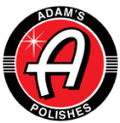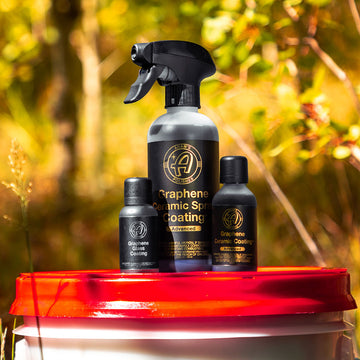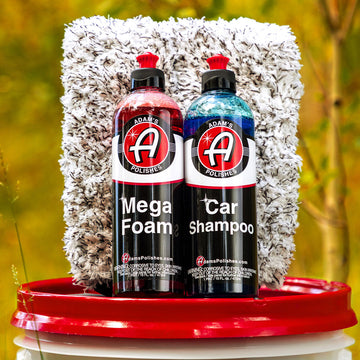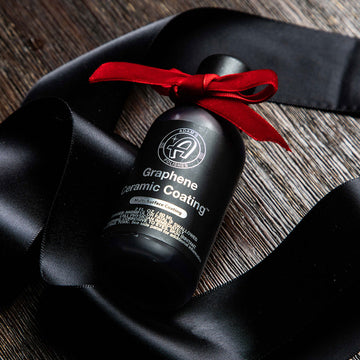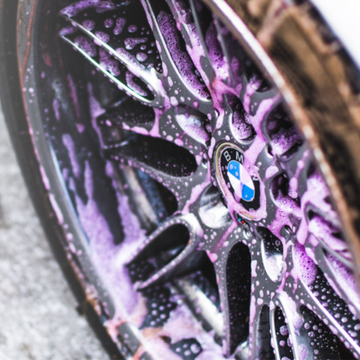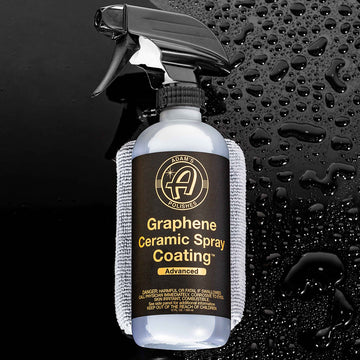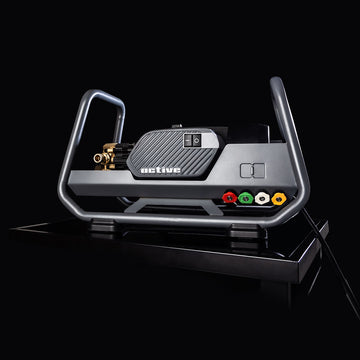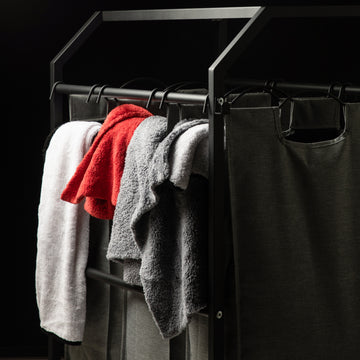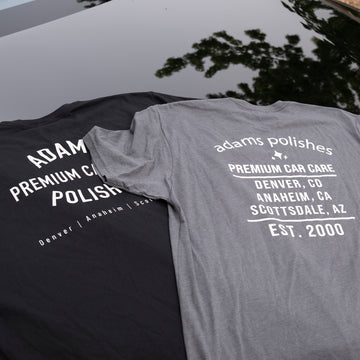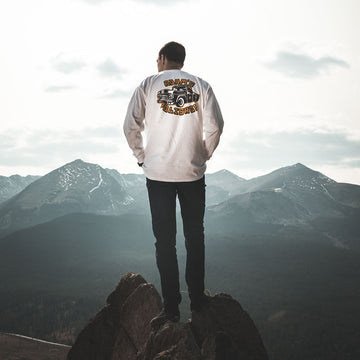Next to swirl marks, water spots are one the most annoying things to deal with when detailing. They can run a range of severity and require various approaches to remove, depending on where they are on the vehicle. The goal of this writeup is to help you better understand water spots and, more importantly, how to remove them safely and effectively.
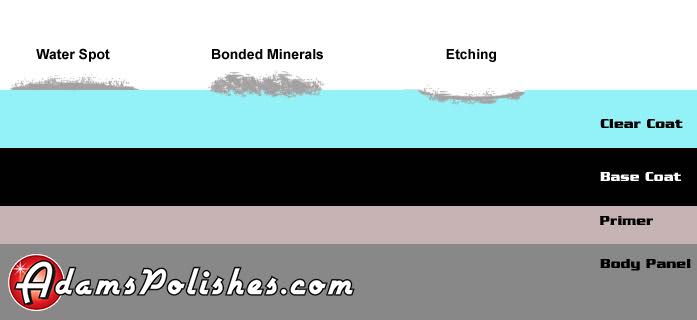
WHAT ARE WATER SPOTS?
Simply put, a water spot forms from the minerals that were suspended in the water droplet as the water dries and evaporates. Depending on the source of the water and where it had been before drying, you can see any number of things cause the actual spot.
Ground water is the most common culprit. The water from a mis-aimed sprinkler, or the water used from your hose, is full of minerals. The type of mineral and concentration varies from region to region, and based on how 'hard' your water is, you may see more severe spotting. Rain water typically carries a different type of contamination. As that little droplet fell through the air, it picked up airborne pollution as well as dust or dirt. Plus, if the water ran off of a tree or nearby roof before landing on your car, it took some of the contamination from those surfaces as well. Road water would be the very dirty water that is splashed up behind your wheels or all over the lower sections of your car when driving in wet conditions. It’s almost impossible to know what is suspended in that water, but it contains all sorts of very nasty dirt, chemicals, oils, and other road grime.
WHAT IS BONDED MINERAL CONTAMINATION?
Bonded minerals are essentially a more severe form of water spot. When mineral concentrations are higher, or a car is subjected to lots of ground water drying on the surface (such as sprinklers that hit a car every morning), water spots can become bonded minerals. These are a little more difficult to deal with, as they form hard bonds with the clear coat that make them harder to remove. Once removed, bonded mineral contamination can sometimes leave those areas looking dull or even pitted to a small extent, which would then require polishing to fix.
WHAT IS ETCHING?
Etching is the worst case scenario in the progression of water spots. Etching typically occurs from water that is baked onto the surface in direct sunlight or high heat. It is also prevalent with acid rain or ground water with high levels of chlorine. Etching can be minor to severe, with the most severe kind requiring very aggressive means of correction - potentially wet sanding in extreme cases. Etching is a circumstance where the water spot has physically 'eaten' its way into the clear coat, so that it sits at a lower level than the surrounding surface.
REMOVAL METHODS:
These processes are listed in order from least to most aggressive.
-
Start simple! For lighter spots something as simple as a complete wash or wipe down with Waterless Wash or Detail Spray and a microfiber towel may be enough to remedy the problem. As with any detailing process, always try the least aggressive or simplest method first.
-
White vinegar can be used for spots that are a little more stubborn and more mineral based. Soak a small area of a plush microfiber towel with the vinegar and wipe the problem area (after the area has been properly cleaned and dust removed) Perform this task out of direct sunlight to avoid complications. Be sure to reapply a protection product to the area afterward, such as Adam’s CS3, as the vinegar will have degraded the protection layer.
-
Claying can be very effective at removing water spots. The process remains unchanged from the usual claying process. Adequately lubricate the surface with Detail Spray and move the clay back and forth over the area using light pressure. Be sure to spend extra time working the spots from multiple angles to give the clay the best opportunity to grab the contamination. Repeat uses may be needed in some cases.
-
If claying the surface does not remove the water spotting, then we can move to a more aggressive option, Adam’s Water Spot Remover. Water Spot Remover is a very strong acidic chemical formula containing acids to neutralize the minerals on the surface and chemically wipe away the spots from the clear coat. You MUST then neutralize the acids in Water Spot Remover by rinsing with clean water and drying, or by thoroughly cleaning the area with Waterless Wash and Waterless Wash Towels to ensure the area is completely clean and dry. We recommend that you do not use Water Spot Remover on glass, or use it as a last resort in this instance, as it can cause permanent cloudiness on glass if used improperly. Please watch this video before using Adam’s Water Spot Remover: Remove Water Spots From Glass And Paint Easily And Effectively | Adam's Polishes Water Spot Remover
-
If the prior steps fail to completely remove the water spots, then you may be dealing with etching. In this case, physical abrasion of the surface becomes necessary to 'level' the clear coat back to the same as the surrounding areas. Follow the same guidelines as when Paint Correcting to remove swirls - be sure to start with the least aggressive Polish first. Inspect the results, then move up to Compound and a heavier-cut pad if necessary, and then back down to Polish, to get the job done. Always test your process in a 2'x2' area or smaller, before moving onto other areas of the car.
WHAT ABOUT ON GLASS?
The same rules apply for glass, but with a few exceptions. Glass is far harder than clear coat, so it allows for more aggressive options when finer options fail; however, as mentioned above, Water Spot Remover can cause more severe permanent damage in the form of cloudiness or haze if it is not used properly on glass, so we would advise against using it on glass without practicing first on an old piece of glass that you do not need. After attempting the above steps on glass, if you have not seen improvement or complete removal, there is one more step to attempt.
- When compounds, polishes, and gritty cleaners won't do the job to remove water spots on glass specifically, try using 0000 Steel Wool with spraying generous amounts of Glass Cleaner. Spray a few mists of Adam's Glass Cleaner into the Steel Wool pad, then spray several more mists onto the glass. Using light pressure, scrub the affected areas of the glass. A very important caution: As with anything aggressive, be sure to mask off adjacent trim and paint to avoid accidental damage, and test an area to make sure the desired results are achieved. Steel Wool will scratch paint!
PREVENTION:
As with anything, prevention is the best medicine.
-
On paint, maintaining a durable layer of protection such as with Graphene Ceramic Spray Coating Advanced™ will prevent minor spotting and lessen the impact of more severe conditions. A ceramic coating will make cleaning water spots that do form on the surface an easier process, since the coating layer will typically prevent them from etching down into the clear coat.
-
Glass Sealant or Graphene Ceramic Glass Coating should be used on exterior glass to give maximum protection on these surfaces as well.
-
Remove standing water from the paint, especially on days where the sun is out.
-
Do not allow water spots to go untreated for extended periods of time. The longer they sit on the surface, the higher the chances of a bigger issue arising.
